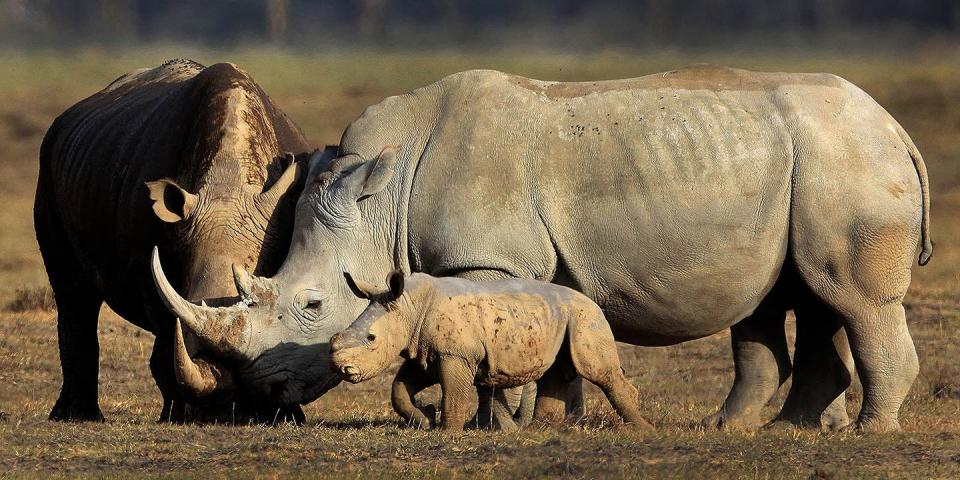The Earth's Sixth Mass Extinction Is Accelerating

A new study in PNAS highlights the mass extinction we are currently undergoing and how losing species would devastate entire ecosystems and upend human life as well.
The researchers emphasize the need for immediate action that includes designating any species with populations less than 5,000 as “critically endangered.”
The Holocene extinction is the sixth mass extinction event in Earth's 4.5-billion-year history.
We are currently in the midst of Earth's sixth mass extinction event and it's accelerating. Known as the Holocene extinction, this event has been occurring for the last 10,000 years, beginning at the end of the last ice age. But an increasing human population and a warming planet have only made this mass extinction even more dire.
According to Science Alert, a huge majority of “vertebrate extinctions seen in the 20th century” are set to happen again. For example, in the 20th century, it's estimated that we lost “at least 543 land vertebrate species” to extinction. The study authors believe that we're set to lose about the same amount of species within the next 20 years or so.
A new problem we have to contend with is the fact that the extinctions that have previously taken hundreds of years to come to fruition will now take mere decades. This means losing hundreds of species in a very short amount of time, which will disrupt ecosystems, food chains, and even the way humans live.
Consider the humble bee. We need them to continue pollinating the crops that we eat—including apples, blueberries, cranberries, melons, and broccoli. California also depends on honey and bumble bees to support its $11 billion almond market. Bees are such effective and valuable pollinators that farmers pay apiarists to bring colonies to their fields to pollinate fruits, vegetables, and nuts.
While they honey bee is currently not listed as endangered, the rusty patched bumble bee (Bombus affinis) is per the U.S. Fish and Wildlife Service. In fact, bumble bees almost exclusively support the majority of tomato pollination and in some cases, are even better at pollination than honey bees. This is due to their ability to remove pollen that's firmly attached to a host plant via a process known as buzz pollination or sonication.
Gerardo Ceballos, an ecologist and researcher with the National Autonomous University of Mexico and lead author of a recent study published in the Proceedings of the National Academy of Sciences (PNAS), says that how we handle “the current extinction crisis in the next two decades will define the fate of millions of species.”
In their study, Ceballos and two co-authors say that the Holocene “may be the most serious environmental threat to the persistence of civilization, because it is irreversible.” They explain that a rapidly increasing human population in conjunction with “consumption rates” are two of the leading extinction causes.
“Species are links in ecosystems, and, as they fall out, the species they interact with are likely to go also. In the regions where disappearing species are concentrated, regional biodiversity collapses are likely occurring,” the authors add.
In a 2015 paper published in Science Advances, Ceballos and Paul Ehrlich, a Stanford biologist and contributor to the recent PNAS study, along with other authors wrote:
“Although biologists cannot say precisely how many species there are, or exactly how many have gone extinct in any time interval, we can confidently conclude that modern extinction rates are exceptionally high, that they are increasing, and that they suggest a mass extinction under way—the sixth of its kind in Earth’s 4.5 billion years of history.”
The researchers add that if we continue to contribute to this “elevated extinction pace,” it would take “as little as three human lifetimes” to feel the repercussions of those losses.
According to Ceballos and team, “around 94% of the populations of 77 mammal and bird species on the brink [of extinction] have been lost in the last century. Assuming all species on the brink have similar trends, more than 237,000 populations of those species have vanished since 1900.”
One of the solutions the researchers offer up is to designate species with populations below 5,000 as critically endangered on the International Union for Conservation of Nature Red List.
They add that conservation of endangered species “should be elevated to a national and global emergency for governments and institutions,” akin to the emphasis placed on climate change. The researchers also call for a global agreement that would “address the extinction crisis” and work to end both legal and illegal animal trade.
“Extinction breeds extinctions,” say the researchers, adding that the time for action is now. “Future generations deserve better from us.”
You Might Also Like

